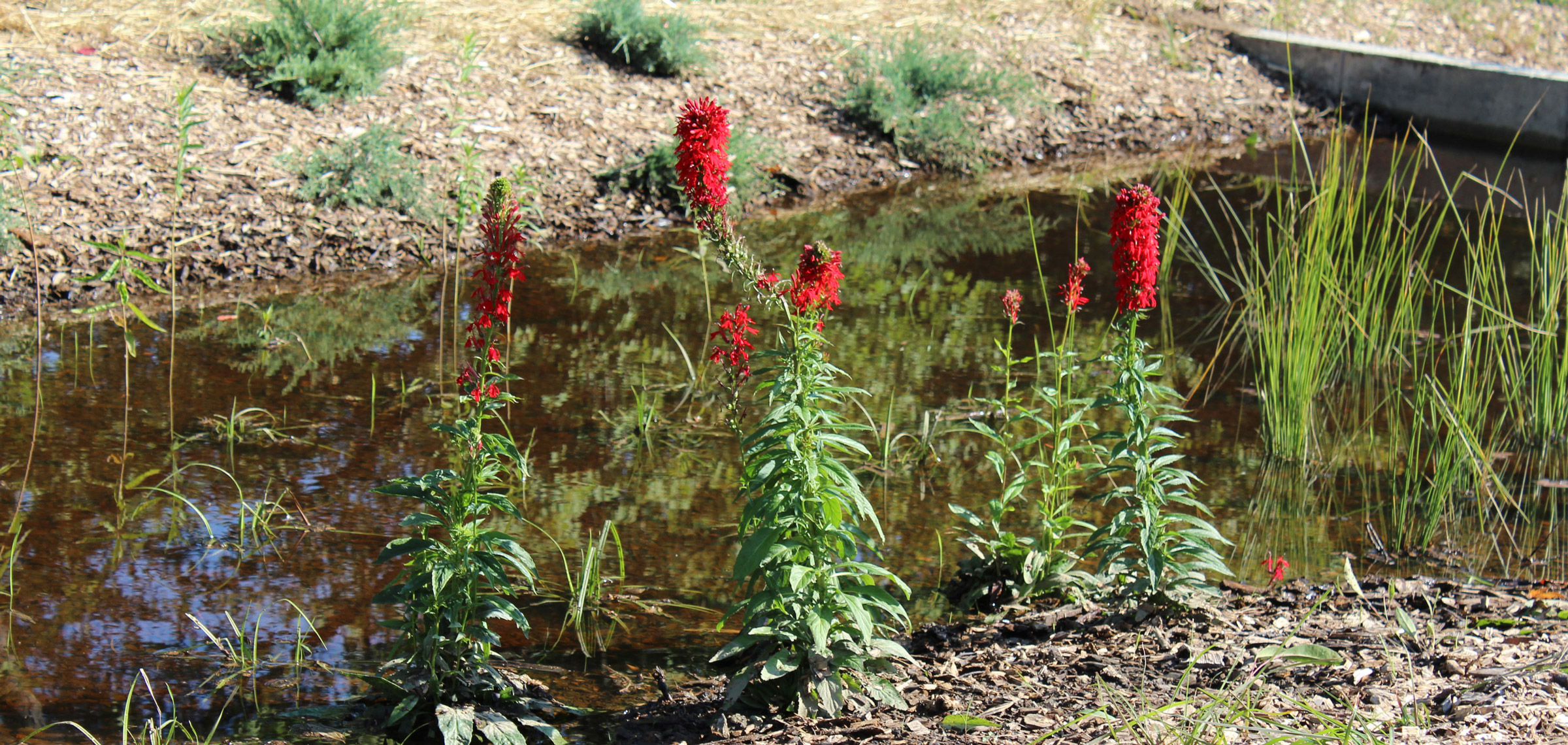You can make your own rain garden right in your own backyard! Plant one near a downspout or driveway, and you'll help protect your community from flooding and drainage problems while turning your yard into a beautiful habitat for local wildlife.
Common questions:
Will my rain garden become a breeding ground for mosquitos?
A rain garden is constructed and planted to help water to evaporate and infiltrate. Rain gardens are generally designed so the water dissipates in less than a day. For mosquitos the transition from egg to adult mosquito takes three to seven days.
Can I plant a rain garden in clay soil?
Rain gardens can work in clay soils, but there are some things you can do to help your garden along. The first thing is to make sure you run an infiltration test before constructing the garden. Choose a bed depth that will drain in one day.
What kind of plants should I use?
Hardy plants that can stand up to both drought and flooding conditions work best. Native plants are even better, because they are already adapted to our local climate, conditions and soil. Many of our native prairie grasses and wildflowers have very deep root systems that break up heavy soils and increase filtration.
Rain Garden Guidelines for Southwest Ohio, pages 19-22
Will I need to water my rain garden?
During the first growing season, while the young plants are getting established, you should water the garden during dry spells. In subsequent years, only water the garden during long dry spells.
How much does it cost to build a rain garden?
If you build the rain garden yourself, the major cost elements are plants, compost or peat moss, and mulch. If you use plugs or small plants, a rain garden can be very economical. Plant costs increase as you pick larger plants.
Will my rain garden cause water to seep into my basement?
A common cause of wet basements is improper grading and drainage around house foundations. Make sure you locate your garden carefully and direct the overflow from the garden away from the house.


